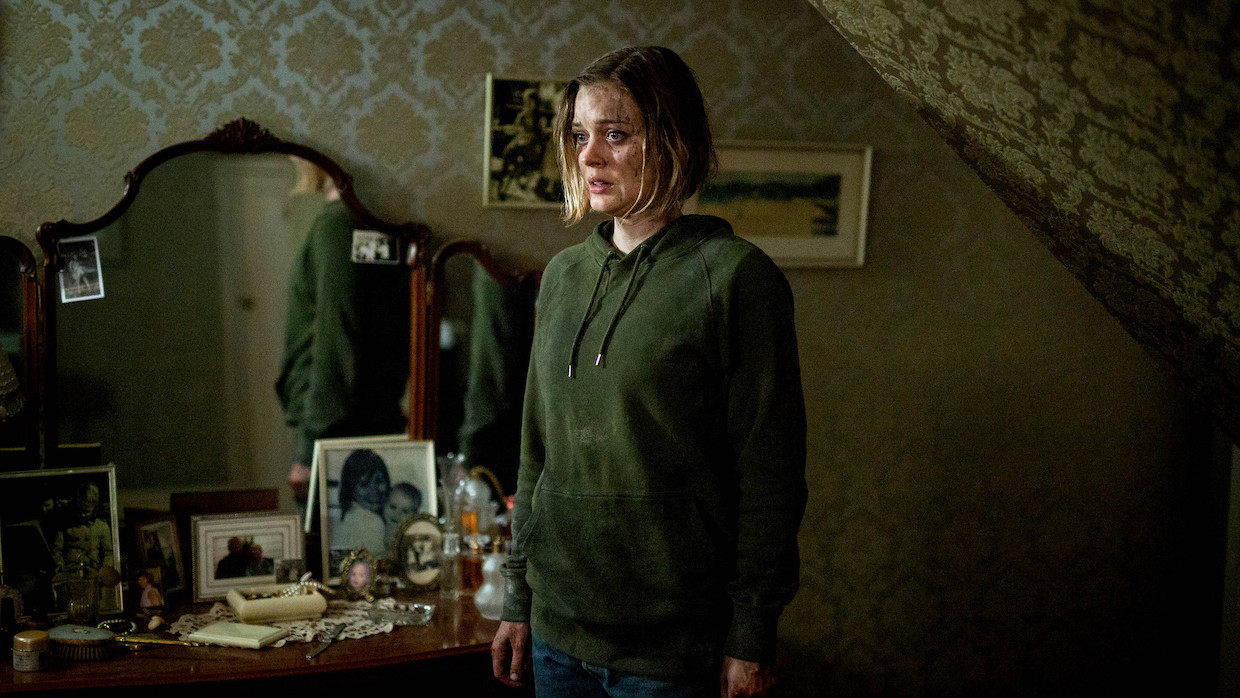 Back to selection
Back to selection
“We Took a Minimalist, Naturalistic Approach”: DP Charlie Sarroff on Relic
 Bella Heathcote appears in Relic by Natalie Erika James (courtesy of Sundance Institute)
Bella Heathcote appears in Relic by Natalie Erika James (courtesy of Sundance Institute) The devastation of dementia is translated into a haunted house horror film in Natalie Erika James’ Relic. It follows Edna (Robyn Nevin) after she mysteriously disappears from her home, causing her daughter and granddaughter great worry. She eventually returns without an idea of where she was, and it appears that something sinister follower her back. DP Charlie Sarroff talks about the inspirations for the visual style of Relic and the equipment that made it happen.
Filmmaker: How and why did you wind up being the cinematographer of your film? What were the factors and attributes that led to your being hired for this job?
Sarroff: I’ve been fortunate enough to have collaborated with the Director, Natalie Erika James, on her three previous short films, as well as some music videos, and commercial work. Relic was a continuation of that working relationship.
Natalie had been developing Relic for several years and I grew very close to the project. Our short film Creswick was essentially a proof of concept for the film.
Filmmaker: What were your artistic goals on this film, and how did you realize them? How did you want your cinematography to enhance the film’s storytelling and treatment of its characters?
Sarroff: Relic explores the overwhelming sense of isolation and confusion that loved ones experience when suffering from dementia. Horror themes are used as a metaphor for the illness. I focused on darkening the visuals, making them increasingly unhinged as Edna (Robyn Nevin) is consumed by the disease. It was important that the film’s cinematography aided these motifs without feeling too obvious. In order to create the appropriate visual language, we thought carefully before using different techniques such as handheld versus Steadicam.
Filmmaker: Were there any specific influences on your cinematography, whether they be other films, or visual art, or photography, or something else?
Sarroff: Natalie and I have always shared a lot of films, artwork, and other reference material with each other before each project. Some film references for Relic include: The Orphanage, The Others, I Am the Pretty Thing That Lives in The House, It Comes at Night, We Are What We Are and the recent English remake of Whistle and I Come to You. Asian horror films are also a big influence on a lot of Natalie’s work.
Filmmaker: What were the biggest challenges posed by production to those goals?
Sarroff: Time, or the lack of, is always one of the main challenges. I also had a shorter than average amount of pre-production, which isn’t ideal, as prep is where ideas and exploration can run rampant and the visual language develops without the constraints of being on set. I also believe extensive prep-production allows for more spontaneity on set because the fundamentals become second nature, opening doors to opportunistic ideas and subtle nuances which often heighten the film’s cinematography.
Filmmaker: What camera did you shoot on? Why did you choose the camera that you did? What lenses did you use?
Sarroff: Our camera package was provided by Panavision in Melbourne, Australia. We opted to use the Arri Alexa SXT as A cam, often switching to an Alexa Mini for gimbal, Steadicam, or handheld shots when in tight spaces.
I appreciate the Alexa’s filmic qualities, dynamic range, and reliable workflow with things like LUT creation. We used Cooke S4 lenses because of their pleasing contrast and focus roll off. I loved the way they beautifully capture skin tones, are fast in low light situations, and practical in confined spaces. We worked with a lot of practical lighting, such as iPhone flashlights. I was pleased with the way the Cooke S4 handles flare and reacts to those types of sources in frame.
Filmmaker: Describe your approach to lighting.
Sarroff: We worked a lot with practical/available lights, then brought in film lights to enhance the look. We took a minimalist, naturalistic approach and were happy to take risks when it came to using sources such as iPhone flashlights and candles.
Filmmaker: What was the most difficult scene to realize and why? And how did you do it?
Sarroff: The scenes shot in the labyrinth were the most difficult, as we were in a confined space and on a tight schedule. It was a balance of creating a dark and disjointed atmosphere, while at the same time allowing the audience to see enough of what’s going on in the scene. The majority of the scenes are lit with practical sources, but we rigged rows of old tungsten par lights above the sets through bleached muslin to create a soft ambience.
Filmmaker: Finally, describe the finishing of the film. How much of your look was “baked in” versus realized in the DI?
Sarroff: We created two camera LUTS with our Colorist, CJ Dobsen: one for day/lighter scenes and the other for night/darker scenes which had more shadow detail. Both of those looks had a similar muted and colder look to what we carried through into finishing. Adjustments were made in the DI but we definitely went in with a clear vision after having established the looks on set.
TECH BOX:
Film Title: Relic
Camera: ARRI ALEXA SXT/MINI
Lenses: Cooke S4
Lighting: Available light, HMI, LED, Tungsten
Processing: Digital
Color Grading: CJ Dobsen at Sound Firm Da Vinci Resolve
